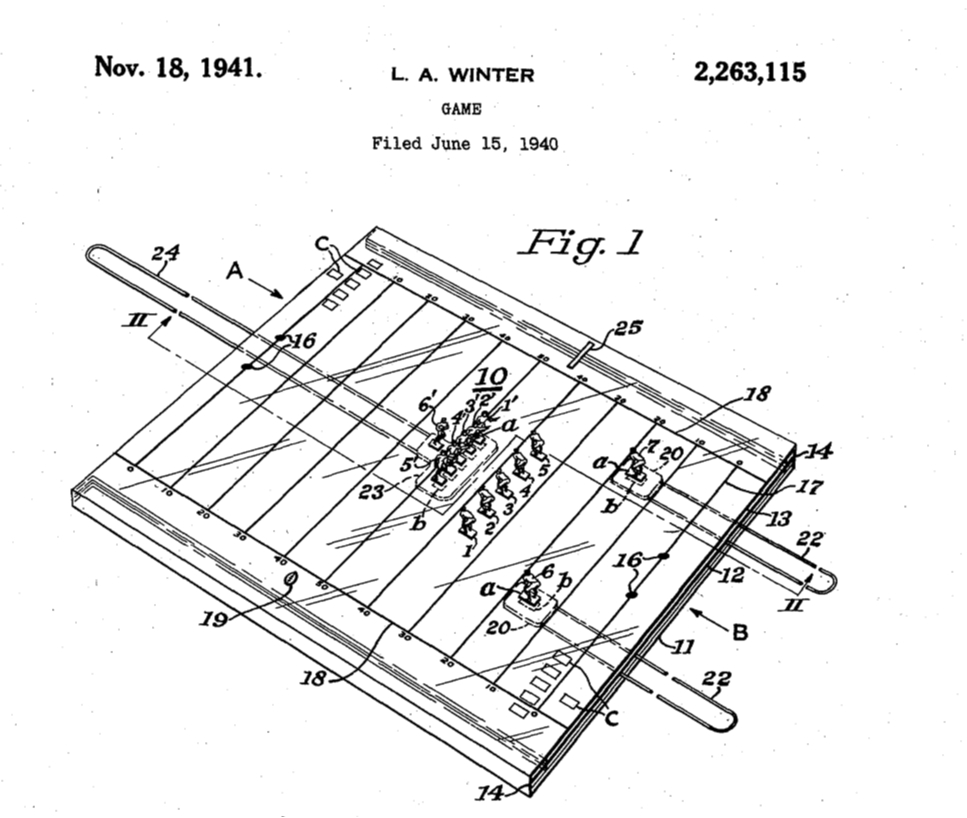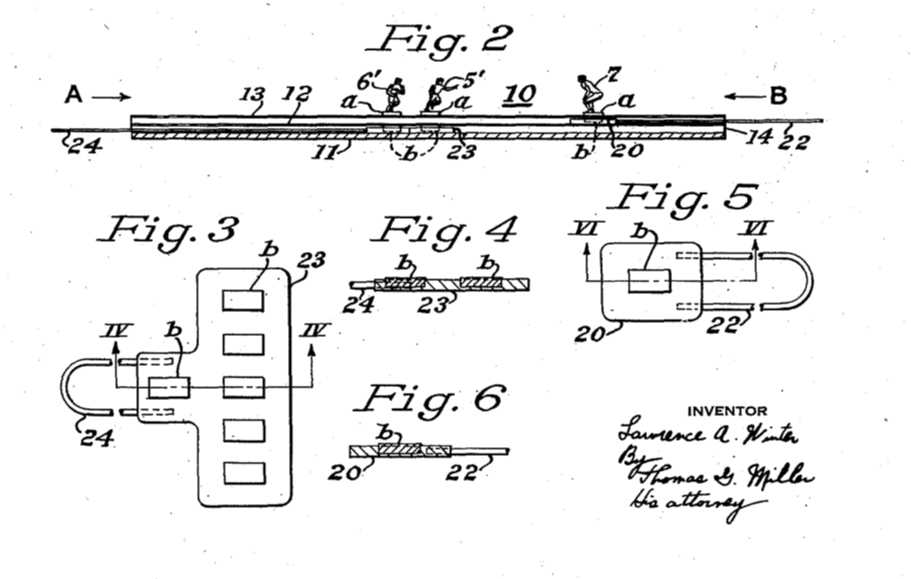 Electric Football’s debut was less than a decade away when the game in today’s “Before Electric Football” installment was submitted to the U.S. Patent Office in June of 1940. This “Game” was eventually granted patent No. 2,263,115, just weeks before Pearl Harbor was bombed and the U.S. entered WWII in late 1941. Although the war likely doomed this game from ever reaching a toy maker, the game’s method of play is bit of a riddle even 72 years later.
Electric Football’s debut was less than a decade away when the game in today’s “Before Electric Football” installment was submitted to the U.S. Patent Office in June of 1940. This “Game” was eventually granted patent No. 2,263,115, just weeks before Pearl Harbor was bombed and the U.S. entered WWII in late 1941. Although the war likely doomed this game from ever reaching a toy maker, the game’s method of play is bit of a riddle even 72 years later.
 Magnets and rods were used to move the players…does that sound familiar? Under the field — which according to the patent was “to be made of paper, fabric, plywood, plastic, or glass” — were two special slots, allowing the opposing teams to move over all parts of the field without the metal control rods bumping into each other. There were six players on offense, all of who moved together in unison on a single magnetic platform (Figure 3). With five lineman and a ball carrying figure lined up behind them, it was a very flying wedge-like method of locomotion.
Magnets and rods were used to move the players…does that sound familiar? Under the field — which according to the patent was “to be made of paper, fabric, plywood, plastic, or glass” — were two special slots, allowing the opposing teams to move over all parts of the field without the metal control rods bumping into each other. There were six players on offense, all of who moved together in unison on a single magnetic platform (Figure 3). With five lineman and a ball carrying figure lined up behind them, it was a very flying wedge-like method of locomotion.
The defense consisted of seven players — five lineman who stood “unaided” and could be knocked over, as well as two magnetically controlled defensive backs who could be moved to make tackles.
That overall setup sounds fairly promising, even with abbreviated teams. But it’s the passing game and kicking game where the game goes out of bounds. Instructions for passing are described as saying “Hep, ball to Player 1.” (Or to Player 5.) Player 1 and Player 5 are lined up as the “ends” on the line of scrimmage. So that’s a 3-yard imaginary pass to player who’s marginally in front of the original ball carrier. And the kicking game consisted of using one of of the defensive backs to ram into the ball and “kick” it forward. What the ball is made of, or how you get it into the air remains unclear (the football is described simply as “a lightweight ball”).
Instructions in this patent alternate from mind-numbingly dense to jaw-dropingly vague, leaving many reasons as to why this game likely never saw the light of day. But it is another branch on the “sports game” evolutionary chart that ultimately led to Electric Football.
The limitations of the games we’ve explored in this series serve as “Exhibit A” to explaining why Electric Football was such a big hit when it came out in 1949.
Earl & Roddy
